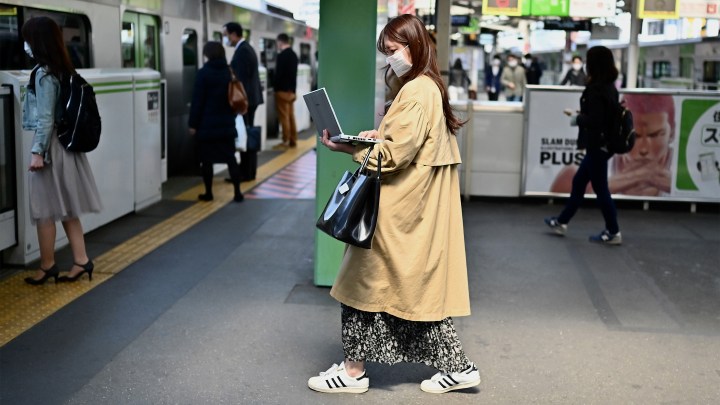
Consumers are buying less while shopping online more
Consumers are buying less while shopping online more

Americans are spending less right now — retail sales were down more than 8% in March, and economists expect a steeper decline in April.
Meanwhile, more of what consumers are buying comes at the click of a mouse or the touch of a smartphone screen.
The Marketplace-Edison Research Poll found that 4 in 10 consumers who were already shopping online for groceries or other goods before the pandemic are now doing it more.
“We do a lot of Amazon and online shopping anyway, and I would definitely say it has increased for sure,” said David Blevins. He lives in Clarksville, Tennessee, with his wife and three kids. He owns a Chick-fil-A franchise that’s been open, and busier than ever, since the pandemic hit.
Blevins said shopping in person right now “is a hassle — either they’re not open or stores have limited hours.” Shopping on the internet, he said, “you don’t have to get out of the house. My wife’s trying to stay in the house with the kids as much as possible. It’s driving her crazy, actually.”
The rise in online shopping is likely to persist post-pandemic, said retail analyst Camilla Yanushevsky at CFRA Research.
“The survey data says that even when the stay-at-home orders are lifted, people still want to avoid public places.”
Yanushevsky points out that with online shopping, it’s easy to compare prices and save.
“It allows the consumer to be more frugal,” she said. “Grocery stores and other retailers spend a lot of marketing and analytics to spur impulse purchases, especially around the checkout counter.”
Frugality is a high priority right now, said Robert Farrokhnia at Columbia Business School. In a recent National Bureau of Economic Research working paper, “Income, Liquidity and the Consumption Response to the 2020 Economic Stimulus Payments,” he and colleagues examined how families at different income levels are spending their $1,200-$2,400 federal pandemic stimulus checks.
For those at low- and middle-income levels who have little savings in the bank to provide an emergency financial cushion, Farrokhnia said, households are spending primarily on “nondurable goods: food, pharmacies, supermarkets and so on. And there are very few expenditures on durable goods — washing machines, cars, appliances or electronics.”
According to the Marketplace-Edison Research Poll, those making less than $25,000 a year are the least likely to have shopped online before the pandemic and to have shifted to online shopping now.
There’s a lot happening in the world. Through it all, Marketplace is here for you.
You rely on Marketplace to break down the world’s events and tell you how it affects you in a fact-based, approachable way. We rely on your financial support to keep making that possible.
Your donation today powers the independent journalism that you rely on. For just $5/month, you can help sustain Marketplace so we can keep reporting on the things that matter to you.












